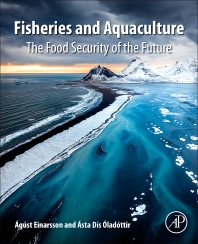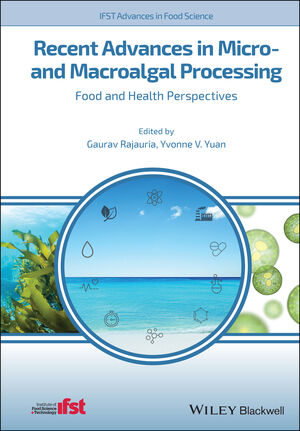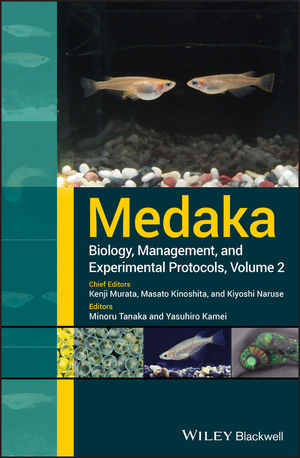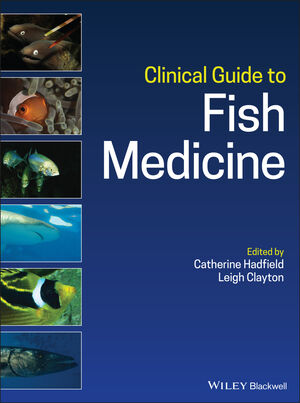
Features
Disease Management
Research
Working with water quality
Examining how water quality can affect fish welfare and how risks can be mitigated
March 27, 2025 By Ruby Gonzalez
 Uneaten feed, stocking density, nanoplastics are all factors that these studies are investigating in order to better protect water quality.
Photo: © MelissaMN / Adobe Stock
Uneaten feed, stocking density, nanoplastics are all factors that these studies are investigating in order to better protect water quality.
Photo: © MelissaMN / Adobe Stock Lumpfish in average and high stocking density
The resiliency of cleaner fish, lumpfish, extends to surviving regardless of changes in water quality, say, fluctuations in temperature, salinity or ammonia levels, research in the U.S. cited.
“Juvenile lumpfish can tolerate a broad range of dissolved oxygen concentrations and temperatures without impacting survival,” authors Nathaniel N. Spada et al., referring to earlier studies. “This resilience seems to apply to tank crowding as well since no mortality occurred in lumpfish, even at 90 g/L, the highest density level we tested.”
Other rearing densities were tested at 70 grams and 40 g/L in an experiment for the study, “Tolerance of juvenile lumpfish (Cyclopterus Lumpus) to high rearing densities”. This was published in the Journal of the World Aquaculture Society.
Two trials using two-gram and 13-gram lumpfish, respectively, herein referred to as “small” and “large” juveniles, were conducted at the University of New Hampshire Coastal Marine Laboratory.
Trial 1 took place during the winter months, and Trial 2 during the summer months.
The stocking density of 90 g/L is double the approximately double the industry rearing standard. While this stocking density did not negatively influence fish survival composed to animal reared at 40 g/L, the intensive stocking suppressed lumpfish growth.
This could be seen as a positive though.
Previous studies have reported that lumpfish’s cleaning efficiency is lower at larger sizes, particularly nearing and at sexual maturation because of changing diet preferences. These turn them into “less effective delousers.”
A study found that smaller lumpfish prefer natural food sources, like sea lice, while larger individuals forage on whatever is available to them in the net pen, including salmon feed.
“Based on the results of this study, lumpfish culturists may be able to suppress or increase growth to better time lumpfish production to the needs of the salmonid farms without affecting survival or animal welfare,” they recommended.
Lactic acid protection for Nile tilapia
Unchanged water cuts operational costs but at the expense of fish health. It shouldn’t always be this way, however, according to a research article in Egypt.
While the unchanged water negatively affected the growth and physiological functions of Nile tilapia, the dietary incorporation of lactic acid provided protection for the fish, said authors, Mohamed F. A. Abdel-Aziz et al.
The research article, “Unchanged water stress induces growth retardation, histopathological alterations, and antioxidant-immune disruptions in Oreochromis niloticus: the promising role of dietary organic acids,” was published in Aquaculture International.
Cohorts in the no-water exchange treatment had the highest level of water-unionized ammonia and nitrite, and exhibited a significant decline weight gain and specific growth rate. The dietary incorporation of one per cent lactic acid “can reduce nitrogenous compounds, enhance immune response, and alleviate these alterations for the sustainable aquaculture industry,” it was cited.
Other dietary organic acids were used in the study, specifically formic acid and commercial acids mix. These were added at one per cent (10 mL/kg diet) and two per cent (20 mL/kg diet).
In evaluating fish performance after 30 days, fish in no-water exchange (positive control) significantly lagged behind the group on organic acids (negative control) in terms of final body weight, weight gain, and specific growth rate. There was also an elevation in the feed conversion ratio in the positive control group.
Duckweed-freshwater mussel biofilter for rainbow trout wastewater
Quality of wastewater from rainbow trout (Oncorhynchus mykiss) juveniles rearing tanks was improved using integrated biofilter using duckweed (L. minor) and freshwater mussels (A. cygnea), as demonstrated by a study in Turkey.
As a biofilter with two varying stocking densities, duckweed was found to significantly affect the pH, dissolved oxygen (DO), nitrate and total phosphorus values in the treatment tanks, cited authors Azhar M.H. and Memiş D.
The study also showed that using duck-weed-freshwater mussels integrated biofilter could minimize the concentration of ammonium and total phosphorous in the wastewater from rainbow trout juvenile rearing tanks.
After 30 days, the experiment showed there was reduction in the concentration of ammonium and total phosphorus in the rearing pond.
The research article, “Nutrient removal from rainbow trout juveniles in fish ponds using integrated biofilter duckweed (Lemna minor) and freshwater mussel (Anodonta cygnea)” was published in Iranian Journal on Fisheries Studies.
The experiment was conducted on tanks with flow-through system. Four 250-litre rearing tanks were stocked with 15 kg of juvenile fish, with original average size of about 25 grams. Water flowed onto sedimentation tank and a sump tank. The filtration tanks contained biofilter species, freshwater mussels and duckweed. Wastewater went to the disposal tank.
Two filtration tanks, each one with a different treatment of duckweed biomass density, had freshwater mussel stocking density of 30 individuals/ m2 with an average weight of 58 grams. Treatments were at duckweed biomass of 270 and 360 grams.
After the 30-day rearing period, from an initial 26 grams for rainbow trout juvenile grew to 60 grams. Specific growth rate was at three per cent and survival rate, 100 per cent.
Performance indicators in freshwater mussel demonstrated that duckweed plants with different wet biomass influenced water quality.
Treatment with less duckweed biomass produced slightly heavier mussels.
Biomass treatment likewise affected decrease in plant weight. The 270 grams biomass had a decrease of 20 per cent while the 360 grams had a decrease of 23 per cent.
The optimal temperature for the growth of juvenile rainbow trout and freshwater mussel is 13 to 14 C, the same temperature during the study period. The range is not optimal for growth of duckweeds.
Bioremediation vs nanoplastics in African catfish
At sub-100nm, polystyrene nanoplastics (PS NPs) can penetrate biological barriers, adversely affecting fish health and may even cause death. A study in Egypt looked into the effects in juvenile African catfish and found out that these could be improved or diminished through bioremediation and micronutrient.
“This research emphasized that PS NPs have deleterious adverse effects on the DNA integrity, erythrocytes morphology, oxidative/antioxidant status and kidneys of African catfish. Administration of selenium and C. vulgaris mitigated these deleterious effects and ameliorated these alterations.
“Therefore, in sustainable catfish aquaculture, selenium and C. vulgaris could be prophylactic agents against the aquatic toxins, and more research should be directed toward the use of probiotics in sustainable catfish aquaculture,” Shimaa A. Abdelbaky et al. said.
Used in aquatic bioremediation, Chlorella vulgaris (Ch) is a microalga that has powerful antioxidant properties. Selenium (Se) is a micronutrient that is necessary for fish development and metabolic processes
That there are no mortalities in the control group, which had no NP treatment, emphasized the serious hazards of NPs in the body. In comparison, group exposed to NPs posted a mortality of 36 per cent.
The beneficial effects of Ch and Se were evident as NP groups with these treatments resulted with marked less mortality rates.
In the NPs and Se group, mortality rate was at 15 per cent. In the NPs+Ch group, the it was eight per cent.
Summing up the individual effects of Chlorella and selium combined with NPs, authors said that the NPs+Se “ameliorated and inhibited the nephrotoxic effects of NPs. Minimal alterative changes in the tubular epithelium were noticed.”
The NPs+Ch group “almost all pathological alterations to near their control levels.”
“Impact of Chlorella vulgaris Bioremediation and Selenium on Genotoxicity, Nephrotoxicity and Oxidative/Antioxidant Imbalance Induced by Polystyrene Nanoplastics in African Catfish (Clarias gariepinus)” was published on Fishes journal.
Print this page





